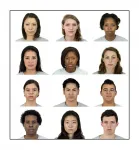(Press-News.org) From the branching pattern of leaf veins to the variety of interconnected pathways that spread the coronavirus, nature thrives on networks -- grids that link the different components of complex systems. Networks underlie such real-life problems as determining the most efficient route for a trucking company to deliver life-saving drugs and calculating the smallest number of mutations required to transform one string of DNA into another.
Instead of relying on software to tackle these computationally intensive puzzles, researchers at the National Institute of Standards and Technology (NIST) took an unconventional approach. They created a design for an electronic hardware system that directly replicates the architecture of many types of networks.
The researchers demonstrated that their proposed hardware system, using a computational technique known as race logic, can solve a variety of complex puzzles both rapidly and with a minimum expenditure of energy. Race logic requires less power and solves network problems more rapidly than competing general- purposed computers.
The scientists, who include Advait Madhavan of NIST and the University of Maryland in College Park and Matthew Daniels and Mark Stiles of NIST, describe their work in Volume 17, Issue 3, May 2021 of the ACM Journal on Emerging Technologies in Computing Systems.
A key feature of race logic is that it encodes information differently from a standard computer. Digital information is typically encoded and processed using values of computer bits -- a "1" if a logic statement is true and a "0" if it's false. When a bit flips its value, say from 0 to 1, it means that a particular logic operation has been performed in order to solve a mathematical problem.
In contrast, race logic encodes and processes information by representing it as time signals -- the time at which a particular group of computer bits transitions, or flips, from 0 to 1. Large numbers of bit flips are the primary cause of the large power consumption in standard computers. In this respect, race logic offers an advantage because signals encoded in time involve only a few carefully orchestrated bit flips to process information, requiring much less power than signals encoded as 0s or 1s.
Computation is then performed by delaying some time signals relative to others, determined by the physics of the system under study. For example, consider a group of truck drivers who starts at point A and must deliver medicine to point E as fast as possible. Different possible routes go through three intersections -- call them B, C and D. To determine the most efficient route, the race logic circuit evaluates each possible segment of the trip, such as A-B and A-D. If A-B takes more time to travel than A-D, whether it's because the path is longer or has more traffic, A-B will be assigned a longer delay time. In the team's design, the longer time delay is implemented by adding additional resistance to the slower segment.
Race logic does indeed involve a race, but in this contest all the truck drivers initially drive in different directions. To determine which route to the final destination is fastest, they race over all possible routes through the different intermediate delivery points. In the new circuit, the NIST researchers inserted a group of time-encoded signals at the starting point, each acting as a different driver that speeds through the team's simulated hardware circuit.
Whenever a driver arrives at one of her intermediate destination points in the race, the model system sends out new drivers (new time signals) who fan out in different directions to the remaining destinations. If a driver arrives at a destination that another driver has already been to, that driver drops out, because her path is no longer competitive. The winner of the race -- the first driver to arrive at the end of the circuit -- indicates the solution to the particular puzzle that the hardware was programmed to solve.
Madhavan began pioneering work on race logic circuits while a graduate student at the University of California, Santa Barbara, in 2016. Those first systems used specialized circuits and silicon chips that were designed to simulate specific networks, such as DNA manipulation, and therefore could solve only a limited number of network-related problems.
At NIST, Madhavan and his colleagues have begun work on more advanced race logic circuits. Simulations conducted by Madhavan, Daniels and Stiles showed that their design, which has not yet been incorporated into a working device, can handle a much broader class of networks, enabling race logic to tackle a wider variety of computational puzzles. These puzzles include finding the best alignment between two proteins or two strings of nucleotides -- the molecules that form the building blocks of DNA -- and determining the shortest path between two destinations in a network.
"We showed how to use memory, which has not been used in previous implementations of race logic, to create a more general temporal computer," said Stiles. "Incorporating memory will allow us to treat a broad class of problems with the next race logic chip that we are planning to make," he added.
INFORMATION:
The researchers have now begun building the hardware based on their design.
Most patients with depression are treated in primary care, however, relatively few clinical trials for treating depression have focused on primary care. Researchers at the Vrije University Amsterdam examined the effects of the two major approaches to treating depression: psychotherapy and pharmacotherapy, as well as combined treatment and care-as-usual. The study integrated the results of 58 randomized controlled trials with a total of 9,301 patients. Results concluded that both psychotherapy and pharmacotherapy were significantly more effective than care-as-usual or waitlist control. However, they found no significant difference between psychotherapy and pharmacotherapy as stand-alone treatments. Combined treatment, particularly in studies that included ...
It's widely understood that people taking a common class of antibiotics, like ciprofloxacin and levofloxacin, run the risk of tendonitis and tendon ruptures. However, a new analysis sheds light on newer, third-generation fluoroquinolones and suggests they may have a lower risk of Achilles tendon rupture. Researchers from Jichi Medical University in Tochigi, Japan, used health care administrative data to identify 504 patient cases of Achilles tendon ruptures with co-occurrence of antibiotics. They found that third-generation fluoroquinolones were not associated with an increase in Achilles tendon rupture. First- ...
DURHAM, N.C. -- You enter a room and quickly scan the crowd to gain a sense of who's there - how many men versus women. How reliable is your estimate?
Not very, according to new research from Duke University.
In an experimental study, researchers found that participants consistently erred in estimating the proportion of men and women in a group. And participants erred in a particular way: They overestimated whichever group was in the minority.
"Our attention is drawn to outliers," said Mel W. Khaw, a postdoctoral research associate at Duke and the study's lead author. "We tend to overestimate people who stand out in a crowd."
For the study, which appears ...
Researchers from the Cleveland Clinic and Takeda Pharmaceutical Company conducted a study to evaluate the effectiveness of shared medical appointments for people with pre-diabetes compared with a group of patients receiving usual care. Shared medical appointments are typically delivered in a medical clinic by physicians and other health care providers. Within the context of this study, shared medical appointments consisted of patients consulting with their doctors one-on-one and then joining a group of similar patients to set goals and review lab results with the same family ...
Between 11% to 40% of adults in the United States experience chronic pain, and primary care physicians may feel ill-equipped to effectively and safely care for patients with chronic pain, addiction or both. Researchers from Tufts University conducted a study to evaluate the effectiveness of an interdisciplinary consultation service that supports primary care physicians who care for patients experiencing chronic pain and addiction. The goal was to identify new and effective strategies that clinics can use to support PCPs.
From that interdisciplinary consultation service, the researchers collected ...
Bacteria that move around live on the edge. All the time. Their success, be it in finding nutrients, fending off predators or multiplying depends on how efficiently they navigate through their confining microscopic habitats. Whether these habitats are in animal or plant tissues, in waste, or in other materials. In a recent paper published in PNAS, a team of researchers led by McGill University, has described a number of factors affecting how five, very different, species of bacteria search and navigate through varied microfluidic environments which pose various decisional challenges. This increased understanding of the bacterial space searching and navigational 'strategies' has implications ...
Antibiotics: Patient Expectations and Doctors' Prescribing Habits May Contribute to Antimicrobial Resistance
Inappropriate antibiotic prescribing for upper respiratory tract infections contributes to antibiotic resistance, making some bacterial infections difficult to treat. This often leads to higher medical costs, prolonged hospital stays and increased mortality. Still, many physicians report prescribing antibiotics at their patients' request. To address patients' expectations for antibiotic prescribing for URTIs, researchers conducted an experiment in which study participants were assigned brief educational videos to watch on a tablet immediately prior to their appointment.
The authors randomized patients into three groups - one that viewed a presentation about ...
Skoltech scientists have created a new monitoring system for agricultural applications that performs real-time image segmentation on board the drone to identify hogweed. The research was published in a high-profile journal, IEEE Transactions on Computers.
Sosnovsky's hogweed is equally hazardous for farming, local ecosystems, and human health. Direct contact with human skin, especially if aggravated by exposure to the Sun, causes severe burns that require continuous medical care and take weeks to heal. The rampant spread of Sosnovsky's hogweed has become a real environmental disaster that extends across the whole of ...
Individuals with diabetes are at greater risk of developing oral health issues, like gum disease, yet care for these linked health issues are usually disconnected, split between primary care and dental care. A research team from the University of Amsterdam developed an intervention that provided primary care-based oral health information and dental referrals for patients with diabetes. In a cluster randomized controlled trial, 764 patients from 24 primary care practices received either the oral health support or standard primary care. Participants were asked to rate their oral health quality of life, as well as their general health and any oral health complaints, at the start and end of the study. Analysis showed that individuals who received the primary care-based oral health support ...
Though different fabrication approaches exist, two-step deposition is one of the main experimental techniques now used to make efficient, stable PSCs, especially on the industrial scale. The process involves first depositing lead iodide (PbI2) and then adding halide salts of monovalent cations such as methylammonium iodide (MAI) and formamidinium iodide (FAI) to convert it to perovskite.
While this two-step deposition is better than other options, it is difficult to maintain reproducible high performance and long-term stability when scaling up, mostly because of a lack ...




